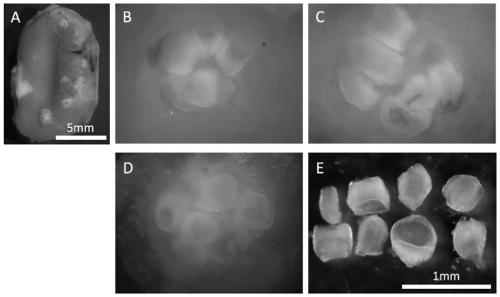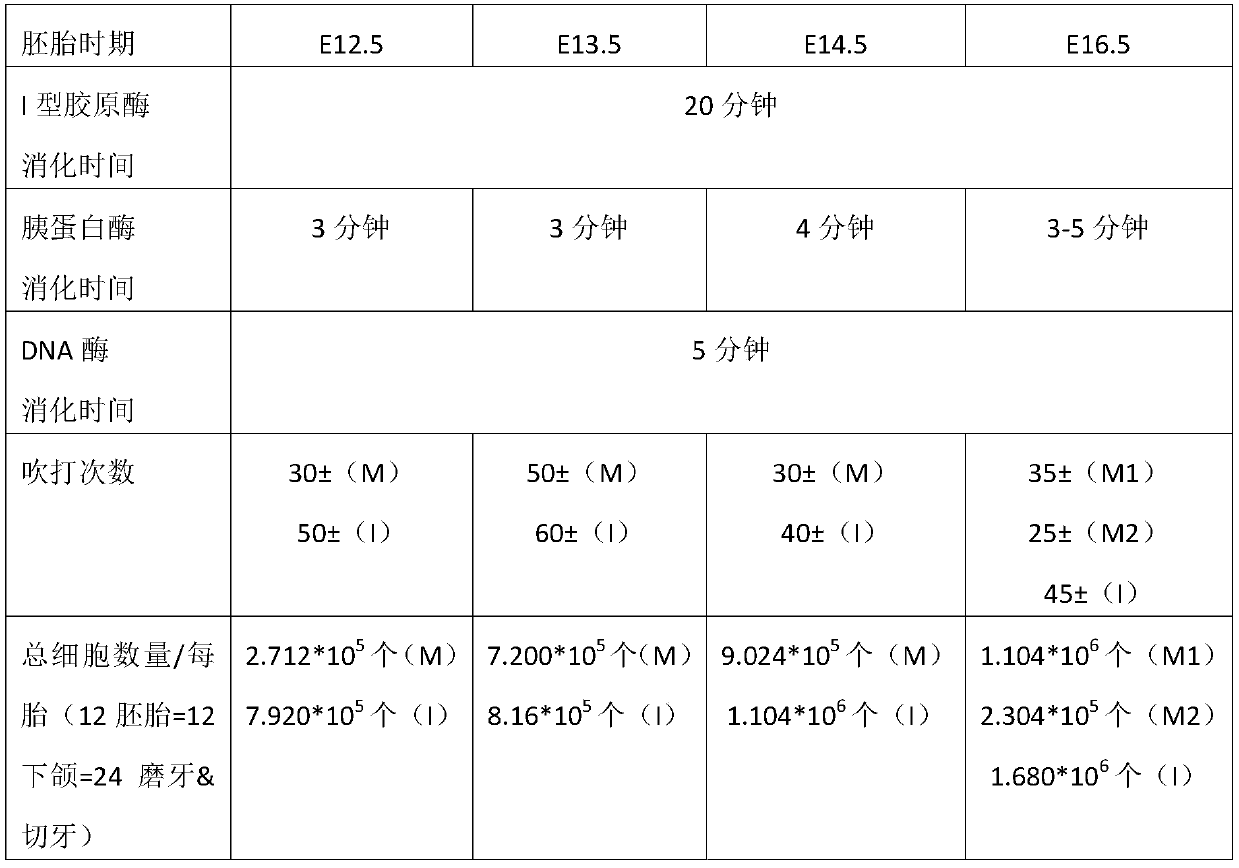Method for separating dental embryo single cells and application thereof
A single-cell, single-cell sequencing technology, applied in the field of cell biology, to reduce difficulty, save digestion time, and preserve the original characteristics of cells
- Summary
- Abstract
- Description
- Claims
- Application Information
AI Technical Summary
Problems solved by technology
Method used
Image
Examples
Embodiment 1
[0049] Taking the 14.5-day mouse embryo as an example, the specific implementation process of the present invention will be described in detail.
[0050] ICR (Institute of Cancer Research) adult mice were purchased from Beijing Weitong Lihua Experimental Animal Technology Co., Ltd., and were raised in the SPF-level experimental animal area of the Animal Experiment Center of Guangzhou Institute of Biomedicine and Health, Chinese Academy of Sciences. Cage thrombus was used to calculate pregnancy period. Then select 14.5-day-pregnant mice, take out the embryos under aseptic conditions after euthanasia, separate the uterine wall, amniotic membrane, and placenta one by one, and eliminate embryos with large individual differences (the whole process is operated in DPBS buffer, DPBS buffer pre- cold, try to operate on ice to prevent apoptosis). After a single mouse embryo was isolated, the dissecting dish containing the mouse embryo was transferred to a dissecting microscope, and t...
Embodiment 2
[0074] The single cells obtained in Example 1 were subjected to combined digestion with collagenase, trypsin and DNA hydrolase for sequencing using the 10x Genonics single-cell sequencing platform. According to the instructions of 10x Genonics single cell 3'reagentkits v2, the single cell library construction and sequencing obtained in the example were carried out. The obtained sequencing information is shown in Table 2 below:
[0075] Table 2 Capture efficiency information of isolated single cells for single cell sequencing
[0076]
[0077] The concentration of viable cells and the number of target cells in Table 2 represent the sample loading information during cell capture. The concentration of living cells refers to: after the tissue is digested into a single cell suspension, the cells are counted by the trypan blue staining method. Since the trypan blue cannot penetrate the cell membrane of living cells, the number of cells counted is the number of living cells, and t...
PUM
| Property | Measurement | Unit |
|---|---|---|
| diameter | aaaaa | aaaaa |
Abstract
Description
Claims
Application Information
 Login to View More
Login to View More - R&D
- Intellectual Property
- Life Sciences
- Materials
- Tech Scout
- Unparalleled Data Quality
- Higher Quality Content
- 60% Fewer Hallucinations
Browse by: Latest US Patents, China's latest patents, Technical Efficacy Thesaurus, Application Domain, Technology Topic, Popular Technical Reports.
© 2025 PatSnap. All rights reserved.Legal|Privacy policy|Modern Slavery Act Transparency Statement|Sitemap|About US| Contact US: help@patsnap.com



